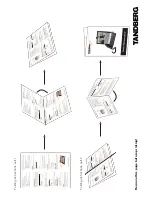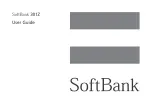
434
C
HAPTER
15: IPX R
OUTING
IPX Servers
Your system creates and maintains a server information table that lists all
the servers that reside on other IPX networks. You can:
■
Use SAP to exchange server information dynamically.
■
Make static entries in the server table.
Important
Considerations
Consider the following guidelines when you set up an IPX server:
■
The first line in the output (status line) indicates whether:
■
IPX forwarding is enabled.
■
IPX RIP mode is active.
■
IPX RIP mode triggered updates are enabled.
■
IPX SAP mode is active.
■
IPX SAP triggered updates are enabled.
■
The secondary route/server option is enabled on the system.
■
The route table display shows the range for the server table primary
entries in the format n-m, where
n
is the current number of entries
and
m
is the maximum number of entries.
■
Static servers remain in the table until you:
■
Remove them.
■
Remove the corresponding interface.
■
Remove the route to the corresponding network address.
■
A static server must have an IPX network address that corresponds to
a configured interface or to a static route. If an interface goes down,
any static servers on that interface are permanently removed from the
server table until the interface comes back up.
■
Static servers take precedence over dynamically learned servers to the
same destination. You can have a maximum of 32 static servers.
■
Before you define static servers on the system, first define at least one
IPX interface.
■
When you use the ipx server remove option to remove a server, that
server is immediately removed from the Server Information Table.
■
When you use the
ipx server flush
command to remove all
dynamically learned servers, all dynamically learned servers are
immediately removed from the Server Information Table.
Summary of Contents for CoreBuilder 3500
Page 44: ...44 CHAPTER 2 MANAGEMENT ACCESS ...
Page 58: ...58 CHAPTER 3 SYSTEM PARAMETERS ...
Page 86: ...86 CHAPTER 5 ETHERNET ...
Page 112: ...112 CHAPTER 6 FIBER DISTRIBUTED DATA INTERFACE FDDI ...
Page 208: ...208 CHAPTER 9 VIRTUAL LANS ...
Page 256: ...256 CHAPTER 10 PACKET FILTERING ...
Page 330: ...330 CHAPTER 12 VIRTUAL ROUTER REDUNDANCY PROTOCOL VRRP ...
Page 356: ...356 CHAPTER 13 IP MULTICAST ROUTING ...
Page 418: ...418 CHAPTER 14 OPEN SHORTEST PATH FIRST OSPF ...
Page 519: ...RSVP 519 Figure 94 Sample RSVP Configuration Source station End stations Routers ...
Page 566: ...566 CHAPTER 18 DEVICE MONITORING ...
Page 572: ...572 APPENDIX A TECHNICAL SUPPORT ...
Page 592: ...592 INDEX ...
















































